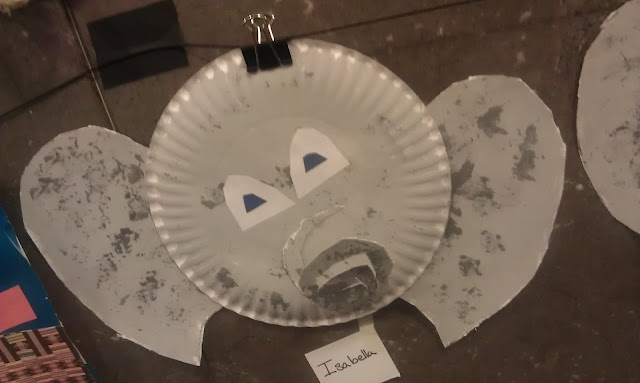They paint until the end of class. Some students get one or two papers painted while some get six to eight done. Some try to have a contest to see who can get the most done. I actually encourage this because it doesn't give the student too much time to over think what they're going to paint. They just go for it, pure enthusiasm, and no inhibitions. For the next class, I take the papers and cut them down into smaller easier to handle pieces. There is nothing like trying to cut a small shape from a huge piece of paper.
We start the next class with the story The Artist Who Painted a Blue Horse. I chose this story because I feel it breaks down the preconceived notions that art has to look realistic. If you have not checked this book out you need to. I review how Carle made his animal pictures and demonstrate how to make an animal from shapes. From here they get to choose a piece of colored construction paper for their background and get to make a picture of any animal they want.
I tell them that every element of their picture will be made from cut paper, no pencils! There also has to be a setting. No animals "floating in space."
I know you're traditionally supposed to save the best for last, but this is MY FAVORITE of all the collages I've ever seen. First, being a Sagittarius, centaurs hold a special place in my heart. Secondly, how creative. What seven year old thinks, "I'm going to make a picture of a centaur". This kid.
A cute bird, and a lovely background.
I guess the owl craze has gotten to this kid as well. I think this owl is one of the most awesome owls I've ever seen.
This picture was created by an eight year old. It's a snake in a basket with a light shining on him, while his owner looks at him through the terrarium glass. Besides the overall greatness of this picture, one thing that's pretty cool is that the student cut triangles to put on the snake. It's easy to think that they may be part of the painted paper design, especially in a reproduction, but no.
I was blown away with the collages the campers made!

























